Band of Brothers: Birding at the Edge of Britain
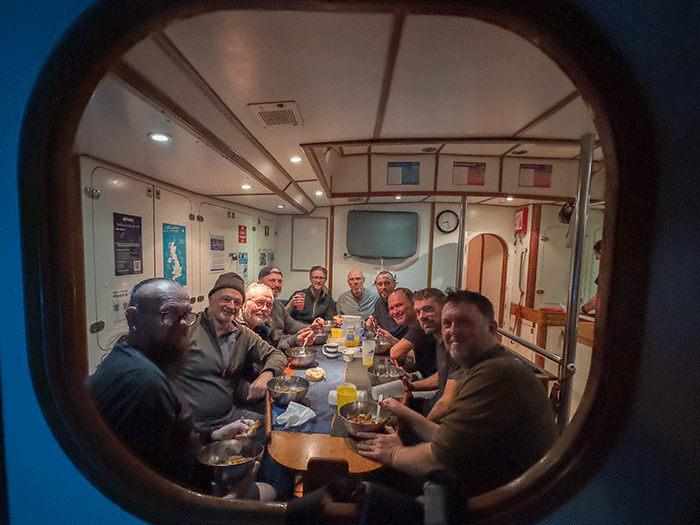
I clearly remember a conversation at Birdfair a few years ago with the then chairman of BBRC, Paul French. We agreed how an area for potential new birds for Britain might be the territorial water that just crossed over the edge of the continental shelf 180 miles southwest of the Isles of Scilly. At that point we had no idea how we could ever get there! Roll on ten plus years and, thanks to the hard work of Scilly islander, Scott Reid, and in collaboration with the Tall Ships Youth Trust, this journey became a reality. The Tall Ships Youth Trust had the ideal boat – and a Challenger series yacht, built and designed to sail around the world against the prevailing winds, was ready and waiting for us in Plymouth!
Paul and I, together with Scott and world seabird expert, Bob Flood, were joined by six more great birders. However, it wasn’t without a sense of trepidation that the 10 of us met at the Mayflower Marina in Plymouth on a very blustery Sunday afternoon. We were about to embark on the second Challenger expedition, and the weather forecast was not for the faint hearted! I think that, inwardly, most of us were relieved when the skipper decided we should postpone departure until Monday! At least we could get a comfortable night on board while tied up in the Marina, familiarise ourselves with the boat and get all our gear stashed safely away! This would be home for the next seven nights!
Monday dawned and the gale was still blowing strong from the west; ideal for bringing seabirds our way but not perhaps for sailing into. Nevertheless, a decision was made to set sail at lunchtime and we headed out into the waves. We knew that the yacht, at least, would be within its comfort zone even if we weren’t. Dinner was skipped that first night by all.
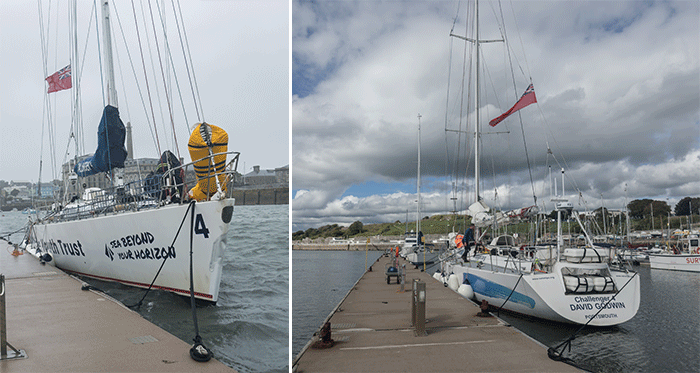
The journey to the continental shelf within UK waters would take us nearly two days of sailing but, once there, we experienced some of the most exciting birding many of us had ever experienced. Fortunately, the wind and waves relented but the conditions remained challenging and life on board was far from luxurious! But this is ocean sailing. The crew of six could not have been more professional. Their experience and expertise meant that we could focus on our aims and be fully assured that we were always in the most capable and safe hands.
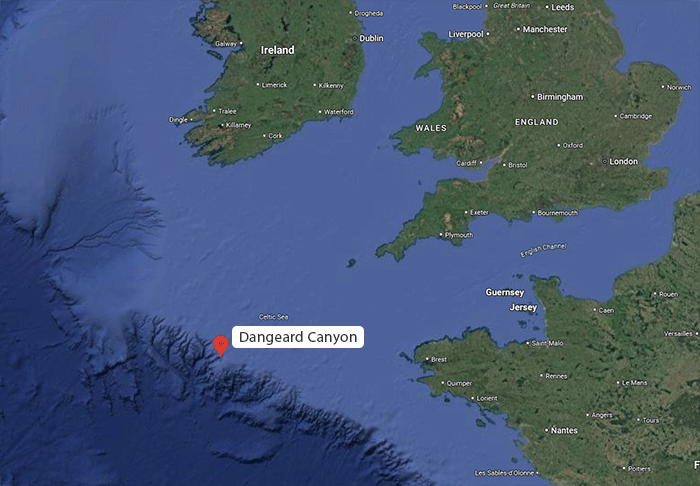
Once positioned over the Dangeard canyon (an area the expedition had visited in 2024), our chumming commenced and what was to follow were three of the most awesome seabird days many of us had experienced in UK waters, as recorded in my notebook summary of “a day in the life of Challenger 4”:
Wake up and see if any part of you either doesn’t ache or has dried out at all. A negative on both accounts! Roll out of bunk and try to stand up. Immediately fall over kicking Barnie’s bucket of deposited stomach contents on the way! Find damp clothes from previous day and take 15 minutes just to get one sock on. Everything caked in salt spray and sticky as hell.
Eventually get clothes on, decline breakfast but sip on tea.
Another 15 minutes of gearing up in foul weather gear (salopettes and jacket) plus life jacket with attached security lines dangling. Climb up stairs onto deck and at least get a breath of fresh air and away from the smell of other rank birder’s bodies. Hope that by the time you get there Bob hasn’t already seen a mega. Sit down in cockpit area in best place you can.
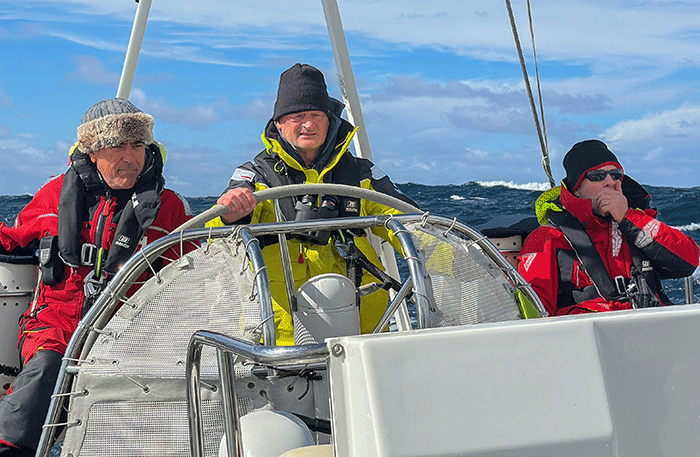
Realise too late that you should have gone for a pee!! Hold it in for the next 5 hours!
Admire the view and contemplate whether you have ever seen a horizon at 45 degrees before. Thank the good lord that you remembered to take a Stugeron with your tea.
Spend the next x number of hours searching for the big one. At least loads of Wilson’s Stormies to keep you occupied; the closeness of the birds tempts you to venture to the back of the boat to take photographs. Camera in one hand, arse on an uncomfortable perch and your security line double checked to make sure you’re not going to slip into your watery grave, you begin your task!
Long periods of quiet until Bob shouts “Band-rumped in the slick”. Hell! Where? - As the slick disappears behind an 8-foot wave. Thank God for my IS bins. There behind a sea of Wilson’s and European Stormies comes the big boy, scything its way over the white turbulent crest of a wave. A bigger brute with long powerful wings gently curved downwards in a subtle arc. Boy this bird looks powerful. A mean machine quartering the slip from side to side as if it’s wondering what is of interest to its smaller cousins. It is, however, graceful and purposeful lacking the erratic angular dancing of Leach’s Petrel, the clockwork whirring of comparatively tiny European Stormies, and the stalling delicate foot pattering of Wilson’s Petrel. The bird rises high over any wave crest, momentarily silhouetting itself against the sky. I’m the master here.
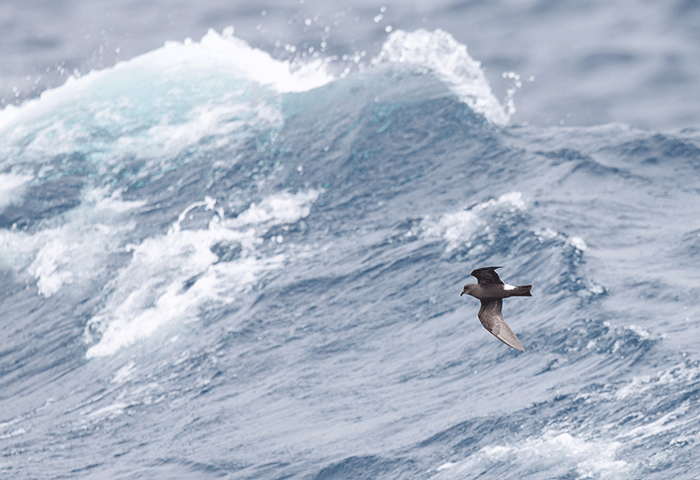
Time to grab the camera. Hundreds of images of grey nothings as the tracking on my Canon R5ii works brilliantly at getting on the bird but only if I point it in the right direction….in itself a mighty challenge as the yacht rolls and pitches and, yet again, I’m slammed against something hard and metal. “Another fecking bruise” as our Irish compatriot, Paul, would say. Eventually our efforts are rewarded; the boat becomes horizontal, the waves part and the beauty that is Band-rumped Storm Petrel decides it’s time for a stylish gliding fly past on the starboard side. As if in slow motion, where everything stands still for a moment, a moment where the shearing flight of our prize shows its upperwing as if to say “look at my carpel patches, neat tidy and not to my forewing. And isn’t my delicately notched tail just clean with no untidy legs projecting beyond”. We note too its narrow arc of a white rump. All features secured. An elegant bank to its right to show its clean underparts for the camera and 30 fps nails it.
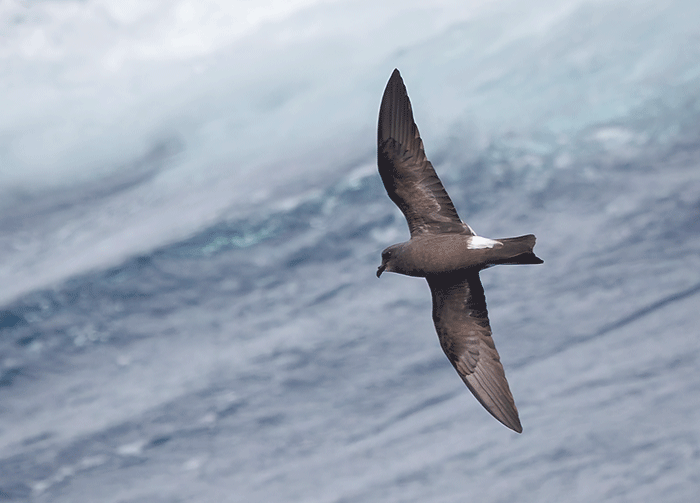
Silence follows, not because we are all in awe, but everyone’s head is down staring through their minuscule viewfinders! The hush is broken by loud yelps of “YES”. It slowly dawns on each of us that we have simply the best photos of this species ever taken in the UK and elation follows.
We all quietly admire the captured plumage features on our photos interspersed with elated chatter about what we have just seen. Thanks, Bob.
Then you realise that your bladder was screaming at you two hours ago but the thought of going down to the sickness inducing cabin, take your “foulies” off and actually get to the tiny box of a space that pretends to be a loo/shower and DVA. (Designated Vomiting Area), is simply too much. Your bladder now really complains and you wish you had had a catheter fitted prior to the trip.
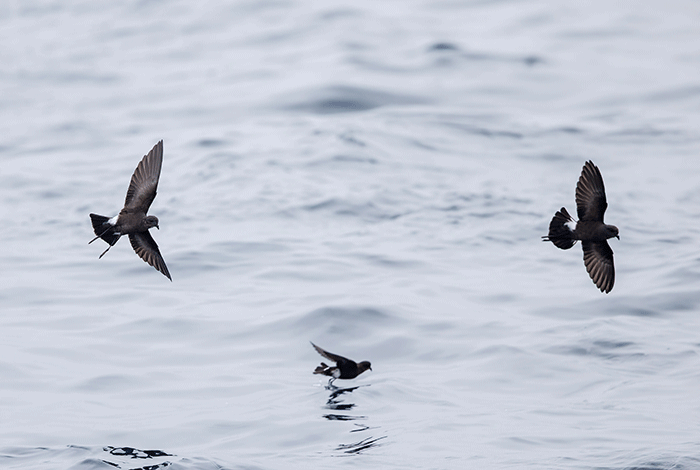
It’s now lunchtime and, miraculously, bowls of goulash appear from the top of the steps. The smell is inviting as the emotional high of the birding experience works better than any sea sickness tablet. (Apart from Barny who has already retreated to his bunk for more head in bucket time). Sadly, for some the joys of eating a hearty meal are somewhat tempered by a huge wave breaking over the boat and turning said goulash into a salty soup! It becomes an added chum supply.
The next seven hours are spent staring at the sea. At least there are birds to see even if by now everything is doubly salty and sticky as we try to keep optics and cameras free from the destroying salty water that surrounds us. One by one we finally give way to our now painful bladders.
As the light dims dinner on deck arrives. On deck is preferable to retiring to the seating area which, in case you had forgotten, has a delightful odour. A combination of damp, smelly clothes, delightful food smells and buckets of various people’s stomach contents. You can guess which dominates.
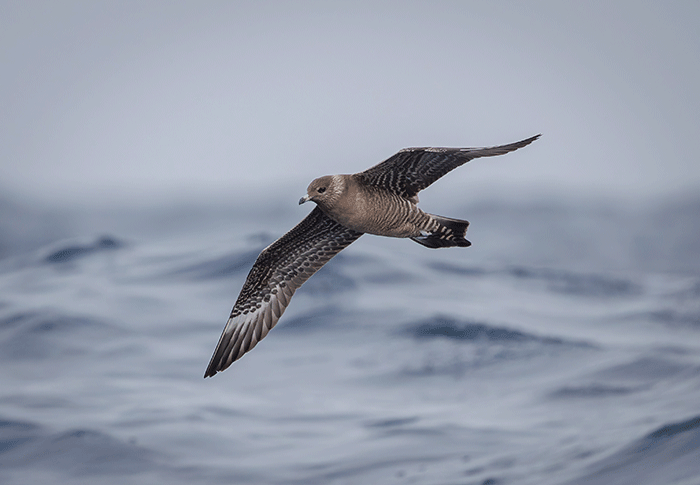
As darkness falls the birders quietly feel it’s safe to retreat to life below. Bob has already gone so we know it’s safe.
Taking your gear off as the boat throws you from one side to the other is another new skill to be mastered. Inevitably the bruises mount up! Climbing over the mountain of deck wellies and life jackets you find your numbered coat clip and try in vain to stash your jacket. You usually end up in the pit of boots. Eventually outer clothes are removed, and you pause to note if your inner body, conveniently hidden from nasal intervention during the time above deck, has deteriorated into an even more festering mass. It has - but what did you expect?!
A hot drink is offered and is welcome. You finally make it to the loo where, in ladylike fashion, you seat yourself to the relief of your inners! NB you must sit…. if you have ever tried to pee in the right direction standing up when a boat rolls this much, you’ll understand.
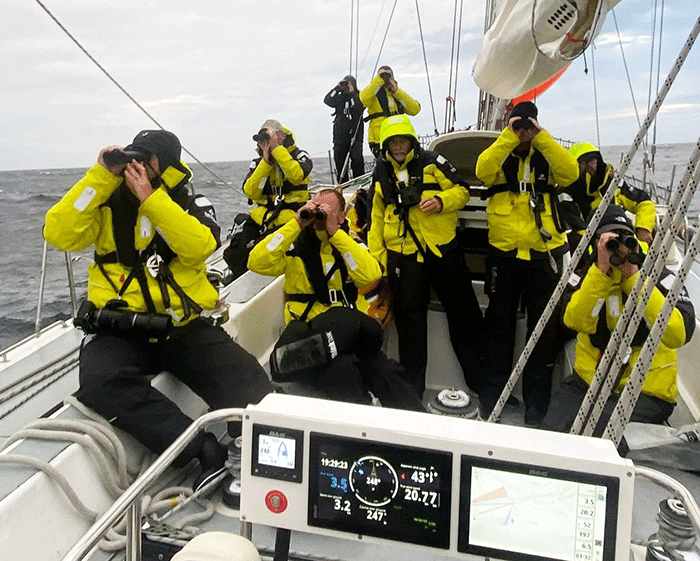
You finally make it to the sleeping area which is the sort of place described by an estate agent as cosy but by a prison inspector would be classed as unacceptable. Clothes come off eventually, and you are thankful you get on with your cabin mates as you have inevitably fallen into each other on one too many occasions. You contort your body into your canvas bunk and then squeeze into your slightly damp sleeping bag. You are still covered in salt, everything stinks and is sticky and, no - you haven’t brushed your teeth. It will just have to wait.
Now for blissful sleep - not! The night chorus of this beautiful sailing boat begins. Groans, creaks, knocks, whips, snaps – they’re all there. Just like the London Philharmonic if they had all popped an ecstasy before starting up. Oh, then there’s the engine which conveniently lies just by your left ear!
Somehow sleep wins the battle and the thoughts of the day’s achievements send one into blissful times. Until, that is, a wave decides it’s time to launch you from your bunk and deposit you onto the floor!!
Roll on tomorrow - just maybe you will get better at all this!!
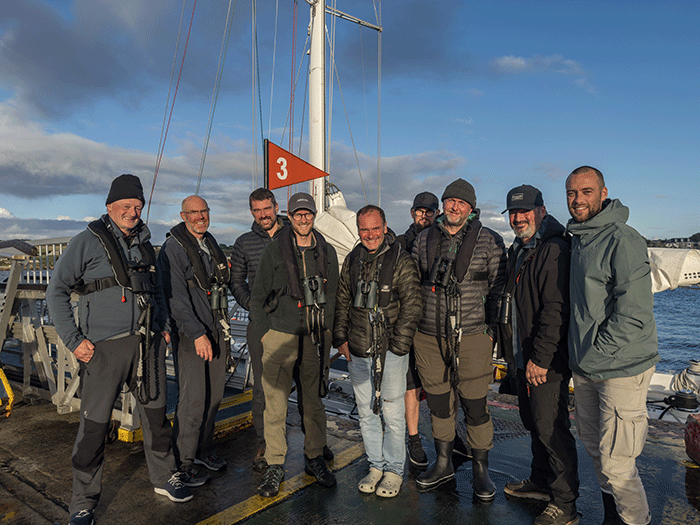
Well, was it worth the hardship? You bet! Our chum slick attracted multiple Wilson’s and European Storm Petrels, and we were able to enjoy both species virtually constantly at incredibly close-range. Cory’s and Great Shearwaters were seen on all days but, in keeping with the 2025 trend, not in huge numbers. Long tailed Skuas and Grey Phalaropes were equally abundant. The undoubted highlight of the trip was the multiple sightings, on all three days of Band-rumped Storm Petrels with a magnificent grand finale on our last night, and in torrential rain, a constant stream passing close by the yacht. We left this spectacle behind with a conservative count of 84 birds as we were beaten by fading light and the continued rain. We were all speechless, and as we left behind the hallowed area of the shelf and set sail towards the Scilly Isles, we drifted off with thoughts of what we had just witnessed and just perhaps a cold beer in the Mermaid inn.
Mike Edgecombe
October 2025
Share this story







